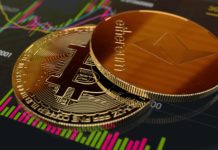
The internet of Everything will be a new industrial revolution: a real disruptive innovation that will enable a deep change in people’s lifestyle and work. We will see a change in the user behaviour and, thanks to the grater availability of smart products and solutions, IoE will be a positive game changer for market models. The Internet of Everything is primarly a matter of numbers: there will be trilions of connected device in the world in few years on our networks. We talked about that with prof. Mischa Dohler, Chair Professor in Wireless Communications at King’s College London, one of the main keynote speakers for the international IoT360 Summit, organized by the European Alliance for Innovation, that will be held in Rome next October.
50 or 20 billion of connected devices in 2020: regardless from the exact numbers, the Internet of Things promises to have a great impact on global networks and connectivity. How will the “disruptive” dimension of IoT impact on communication networks and what role will connectivity standards have, specifically 4G and 5G, to streamline this development?
First, regarding the predictions, it is important to understand that these billions of IoT devices also include our mobile phones as all smart phones contain in average some dozen sensors. In the light of this, it is interesting to observe that 4G already plays a pivotal role in connecting these sensors to the Internet today as the mobile phone acts as a proxy. Interestingly, IoT devices don’t produce a lot of traffic; maybe a few bytes now and then but not the Mb of data generated by a Skype call. Whilst today’s 4G basestations can handle some hundred voice/data users, it can already absorb 15,000 IoT devices without any notable impact. But we want more, and in 5G we will aim for some 300,000 devices per basestation. The problems then, however, may not be at the wireless edge but how the IoT traffic is routed through the Core Network and Internet. Indeed, trillions of small data packets with headers of the same length as data content will put routers at their absolute limit. We still need to do a lot of research and innovation!
We have been addressing to forthcoming generations of urban sensors as one of the main originators of such M2M data traffic. The IoT-driven urban big data, is therefore regarded as a key requirement lead the smart city concept to success. Which are the main challenges that a Smart City will have to cope with in order to turn deriving information into real services for citizens?
In fact, this is already happening. Look at services offered by Google Maps, by Uber, by real-time bus arrive apps. Without sensors in the streets (which happen to be in the pockets of our citizens), these applications wouldn’t exist. And we will see more and more of that, as more sensor capabilities are hitting the streets; and data is being opened up more and more. Now, as for IoT applications stemming from M2M sensors installed by the town hall or businesses, we see an uptake, albeit very slow. The problem is that capital investments to install and maintain sensors are very large and – since most business models are not proven yet – very few dare to actually deploy the technologies. Take the example of Smart Parking where a sensor is installed in each parking bay able to detect the presence and absence of cars and thus able to notify drivers of the quickest route to a parking spot; whilst utility and usefulness has been proven on paper as well as in practice at small scale, there is no massive uptake globally. But I am not worried about this, the Internet also took 20 years to mature.
Recently you mentioned a fascinating concept, the Tactile Internet, as the next IoT step. Could you please describe what is it and its relationship with the contemporary concept of IoT?









Facebook Comments